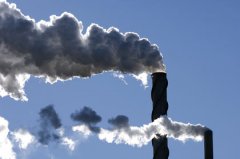Environmental Diseases
Environmental diseases are illnesses and conditions that result from manmade environmental problems.
KEYWORDS
for searching the Internet and other reference sources
Carcinogens
Herbicides
Hydrocarbons
Mercury
Pesticides
Pollution
Radiation
Silent Spring
Rachel Carson's 1962 book Silent Spring described an environment ravaged by pesticides:
Over increasingly large areas of the United States, spring now comes unheralded by the return of birds, and early mornings are strangely silent where once they were filled with the beauty of bird song.
Carson questioned the use of pesticides, particularly DDT, and described how people were slowly destroying the world around them. Carson and her ideas were attacked from many sides, and one chemical company tried unsuccessfully to stop the book from being published.
Silent Spring marked the beginning of the environmental movement. The public listened to Carson, and ultimately, the government listened too. In 1972, the United States banned the use of DDT because it had been linked to cancer in laboratory studies with mice.
What Are Environmental Diseases?
Illnesses and conditions caused by factors in the environment are collectively called environmental diseases. Pesticides, chemicals, radiation, air pollution, and water pollution, are some of the manmade hazards that are believed to contribute to human illnesses. Potential illness-causing agents are everywhere: at home, at work, and at play. However, the likelihood of an individual developing a specific disease depends on the hazards present in their particular environment and their genetic susceptibility to a specific hazard. For example, x-ray technicians are at risk for radiation-induced illnesses, whereas coal miners are prone to lung diseases caused by inhalation of dust. Proper use of safeguards can prevent these and other environmental diseases.
Myth Versus Reality: Proving Cause and Effect
People like Rachel Carson have made Americans aware of the potential health consequences of many everyday processes and products. Because many things present in the environment have the potential to cause illness in some susceptible people, environmental diseases often are controversial. Unfortunately, when a large group of people begin claiming that something in the environment is making them sick, fear can grow into a myth without any proof. For example some people believe that exposure to high-voltage electric power lines causes cancer. So far, however, there is no conclusive evidence that this is true.
For scientists, showing that something in the environment is the cause of a disease is a difficult process that can take many years.
Whiat Happened at Love Canal?
From 1942 to 1953, the Hooker Chemicals and Plastics Corporation used the Love Canal in Niagara Falls, New York, as a dumpsite for its chemical wastes. When the site was full, it was covered with soil and later sold to the Niagara Falls School Board with a warning about the chemical wastes buried beneath the land.
The land that once had been a hazardous waste site became a neighborhood called Love Canal, complete with a school and hundreds of homes atop the waste site. Homeowners, however, were not warned about the hazards underneath their houses.


